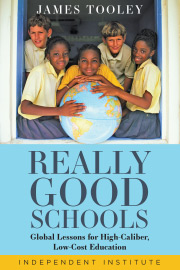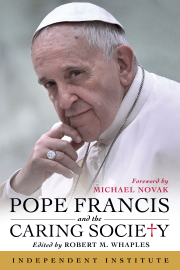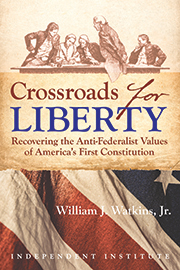Impacts of Sexual Assault on Civil Society Go Beyond Statistics
Today’s article is a qualified mae culpa. One of the first comments on an earlier post on campus rape and sexual assault challenged the veracity of a datapoint used frequently by anti-sexual assault advocates: one in four women will be sexually assaulted by the time they leave college. It’s a number I’ve referenced in my own writings. Christina Hoff Sommers does a nice job of dismantling this number, and she accomplishes this in part by deconstructing the 20% figure in light of the newest data from a recent (December 2014) Bureau of Justice Statistics (BJS) report.
The BJS report is probably the best available data examining trends in rape and sexual assault victimizations between 1995 and 2013 for women aged 18 to 24. The key data points are 6.1 per 1,000 female college students report being victims of sexual assault or rape, significantly lower than the 20% figured used by many advocates and advocacy groups. Moreover, 2.0 per 1,000 report being victims of completed rape, and 1.5 per 1,000 report being victims of attempted rape. While these numbers are substantially below the higher estimates, the BJS report is careful to note that the higher figures are from studies that use different methodologies and different definitions of rape and sexual assault.
If these numbers–6.1 per 1,000 for sexual assault victimations and 3.5 per 1,000 for completed and/or attempted rape–are the “true” representation of sexual assault and rape prevalence on American college campuses, even though they are much lower than previous estimates, what does this mean for women and freedom on campus? More than one might think, and this is why I believe libertarians should engage on this issue and why this article is a “qualified” mae culpa.
First, the jury is still out on the magnitude of the “true” number or its prevalence. The BJS study explains why its numbers may be lower than other studies (see pp. 2-3), and the authors of the original study that promoted the 20% figure have also provided a credible defense of their estimates with the appropriate caveats. They note, among points, that the reported incidence of rape (rather than the broader category of sexual assault) among the college seniors at the two large universities they surveyed was about 14%. (For reasons I cannot divulge here for confidentiality purposes, I believe the BJS numbers on face value are low but the 14% figure is probably too high.)
Second, even the lower BJS estimates paint a disturbing picture of the risks facing young women as they enter college. While critics note that the revised estimates suggest 1 in 53 women will experience a sexual assault in any given year, the absolute number is non-trivial. Women are more likely to be victims of sexual assault and rape than robbery, and almost as likely to be the targets of aggravated assault (BJS, table 2). At a large urban university such as Florida State University (with about 18,000 female undergraduates), this ratio translates into scores of rape survivors attending the school at any given time along with hundreds of other victims of sexual assault. These numbers could fill a sorority or two.
Third, most sexual assaults and rapes on campus are not random events. While I have challenged the notion that our campuses embed a “rape culture,” certain elements of college campuses clearly exhibit markers of a rape culture. For example, higher rates of sexual assault are reported for certain fraternities and groups of athletes. (See this article here for a review of the academic literature.) Also, individual predators, irrespective culture, rationally lure unwilling men and women into compromising and intimidating environments leading to sexual assault. (See former police officer Robert Parke’s Staying Safe in an Unsafe World for an alarming review of the tactics and techniques used by modern-day predator rapists.)
But the effects of rape and sexual assault are more far reaching than these numbers suggest. For example, I anonymously surveyed my students (mostly junior and senior social science majors) and asked them one question: Do you personally know someone who has been sexually assaulted? This is hardly a random sample, but the results were telling. Of the students returning surveys, 63% said they personally knew someone that had been sexually assaulted. When broken down by gender, virtually all the women knew someone who had been sexually assaulted. These results suggest that sexual assault is part of the college experience for many, if not most, undergraduate students even if they are not survivors themselves. I have no reason to think my college students and their experience are unique.
Small amounts of violence, when perpetrated in a systematic way, undermine free societies. The fact that perhaps 80% of sexual assaults are not reported to police (and other studies suggest the number may be closer to 90%), suggests institutional and community trust is low. In the BJS study, 76% of women reporting a rape or sexual assault indicated the offender was an intimate partner or an acquaintance. Most of these assaults take place away from public spaces and witnesses. They also lack physical violence–scratching, hitting, and other forms of inflicting physical trauma–that make successful prosecution likely. Low confidence in community and other institutions, combined with the inability to hold perpetrators accountable for their actions, undermines the social trust essential for free societies to operate.
Rape and sexual assault do not have to be an “epidemic” to have a pervasive negative impact on our college communities and young adults. Addressing sexual assault on college campuses is about managing a healthy campus environment that is free of intimidation, threat, and fear, and fostering one based on trust, respect, compassion, and exchange. These are the building blocks of a free society and a free economy and warrant our attention and commitment.













